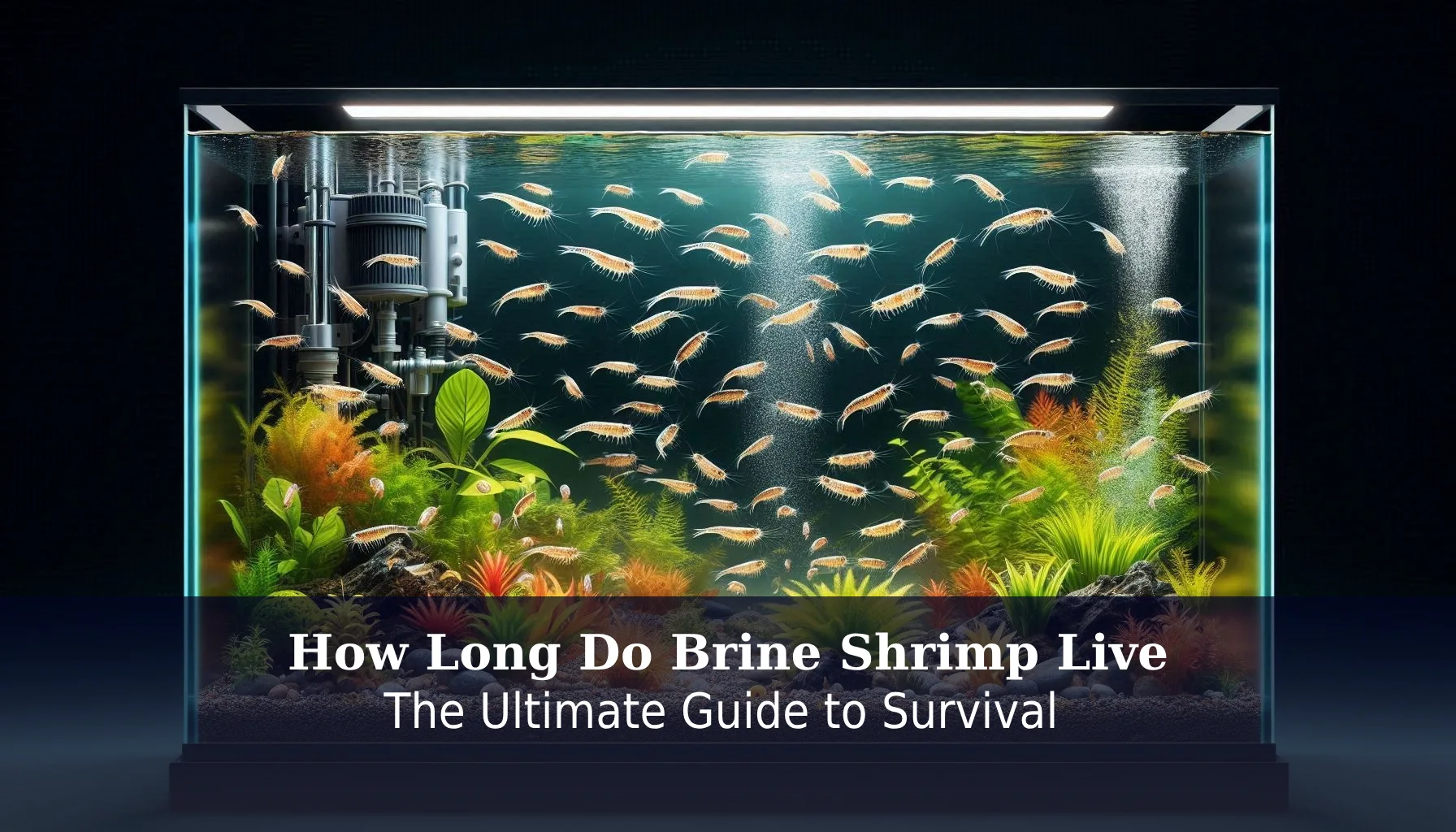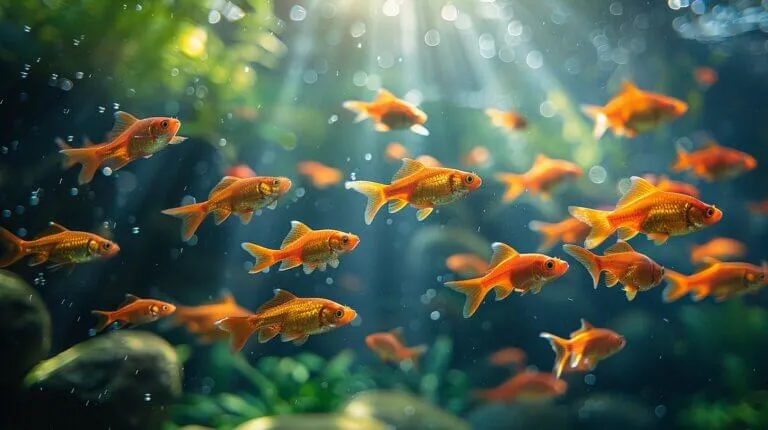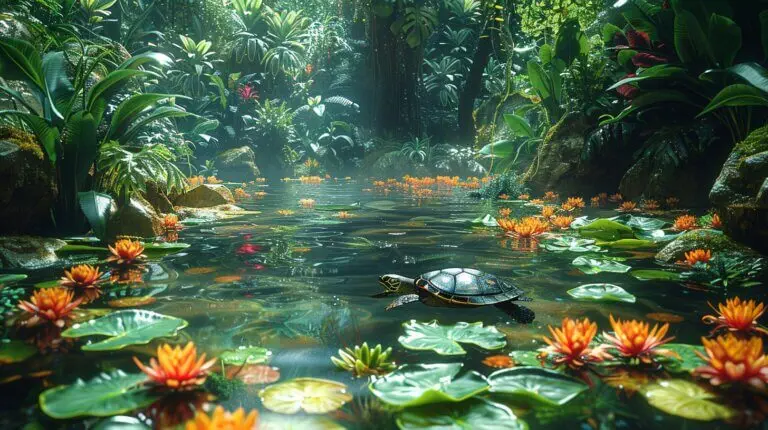Brine shrimp, also known as Artemia salina, are not just fascinating little creatures—they also play a big role in the aquatic world! Understanding how long do brine shrimp live can help you keep your aquarium thriving and healthy. These tiny shrimp can be an excellent source of live food for your fish, but knowing their lifespan is key to managing their care properly.
Why should you care about the lifespan of brine shrimp? Well, if you don’t know how to provide the right conditions, you might end up with a short-lived colony. In this guide, we’ll explore the natural lifespan of brine shrimp, the impact of water quality and temperature, and how to create an ideal habitat for these remarkable organisms. Get ready to dive into the world of brine shrimp care and learn how to keep them alive and kicking for as long as possible!
Understanding How Long Brine Shrimp Live in Different Environments

Natural Lifespan of Brine Shrimp as an Organism
Brine shrimp, scientifically known as Artemia, typically have a lifespan of two to three months under standard aquarium conditions, which include adequate food and water. However, in optimal environments, such as well-maintained home aquariums with the right temperature and salinity, they can live for up to five years. This significant variation in lifespan highlights the importance of environmental factors in their longevity. For instance, brine shrimp can enter a dormant state when conditions become unfavorable, allowing them to survive longer without water or food.
Temperature Impact on How Long Brine Shrimp Live
Temperature plays a critical role in the lifespan of brine shrimp. They prefer a temperature range of 24 to 27°C (75 to 81°F) for optimal growth and reproduction. If the temperature falls below this range or exceeds it significantly, their lifespan can decrease dramatically. Maintaining the right water temperature is essential for extending their life and ensuring their health.
Water Quality Parameters for Maximum Lifespan
Water quality is another key factor that influences how long brine shrimp live. They thrive in saline environments, particularly with salinity levels between 30 to 35 g/L. While they can tolerate higher salinities, up to 250 g/L, extreme conditions can lead to stress and a shorter lifespan. Proper filtration and regular water changes can help maintain good water quality, which is crucial for the health and longevity of brine shrimp.
| Environmental Factor | Optimal Level | Effect on Lifespan |
|---|---|---|
| Temperature | 24-27°C | Promotes hatching and growth |
| Salinity | 30-35 g/L | Supports health and longevity |
| Water Quality | Clean, filtered | Reduces stress and disease |
References:
Lifecycle Stages of Brine Shrimp as a Feed Organism

From Cyst to Adult: Understanding the Live Development Process
Brine shrimp begin their life as dormant eggs, also known as cysts. These cysts can hatch when conditions are right, such as when water is available and the temperature is suitable. The entire process from hatching to adulthood typically takes about 8 to 10 weeks, depending on environmental factors like temperature and salinity. (British Ecological Society)
Nauplii Stage: The Optimal Feed Period
After hatching, brine shrimp enter the nauplii stage. This stage is crucial for feeding and growth. The newly hatched nauplii are a nutritious food source for many aquatic animals, making them valuable in aquaculture. They require appropriate feeding and water conditions to develop properly. (Science Direct)
Creating Ideal Conditions for Extended Organism Viability
To help brine shrimp thrive, it is essential to maintain optimal water quality and temperature. Regular monitoring of salinity and cleanliness can lead to healthier shrimp and a longer lifespan. Proper care during this stage maximizes their viability and ensures a successful growth cycle.
Using Brine Shrimp as Live Feed in Aquaculture

Best Practices for Harvesting Live Organism Cultures
For aquaculture, it is important to regularly check water quality and salinity levels. These practices ensure a robust culture of brine shrimp for feeding. Harvesting techniques should also be gentle to avoid damaging the organisms.
Nutritional Benefits of Brine Shrimp as a Feed Source
Brine shrimp are rich in nutrients, making them an excellent food source for larval fish and crustaceans. Their high protein content and essential fatty acids support the healthy growth of young aquatic animals. Including brine shrimp in the diet enhances growth rates and overall health.
Storage Techniques to Extend Useful Feed Life
Storing brine shrimp cysts properly can extend their viability. Keeping them in dry, oxygen-free conditions allows for long-term storage, potentially lasting several years. When ready to use, they can be hatched on demand, providing flexibility ideal for aquarists and aquaculture facilities.
Advanced Brine Shrimp Management for Aquarists

Establishing Self-Sustaining Live Organism Colonies
Experienced aquarists can create environments that support self-sustaining populations of brine shrimp. This approach minimizes the need for constant hatching and harvesting, providing a continuous food source for aquarium inhabitants. Proper management of water conditions and feeding is key.
Troubleshooting Common Issues with Live Brine Shrimp Cultivation
Regular monitoring and adjustments can prevent common problems in brine shrimp cultivation. Issues such as mortality or poor growth rates can often be traced back to environmental factors. Addressing water quality, temperature, and salinity can lead to healthier shrimp.
Conclusion
Brine shrimp provide valuable insights into aquatic life and can live for several months to years under optimal conditions. Their resilience and nutritional value make them a popular choice for aquaculture and hobbyist aquariums. Understanding their care requirements is essential for maximizing their lifespan and utility.
FAQs
1. How long do brine shrimp live?
Under typical aquarium conditions, adult brine shrimp usually live about two to three months. However, in ideal circumstances, they can survive for approximately five years, remaining viable in a container with the right conditions.
2. What temperature is best for brine shrimp?
The best temperature range for brine shrimp is between 24 to 27°C (75 to 81°F). Maintaining this temperature ensures optimal biological activity and promotes the hatching of brine shrimp eggs.
3. What salinity levels do brine shrimp prefer?
Brine shrimp thrive best in salt water with salinity levels between 30 to 35 g/L. This environment mimics their natural habitat in sea areas, where they can easily access food sources like alga and remain active on the surface.
4. How quickly do brine shrimp eggs hatch?
Under suitable conditions, brine shrimp eggs typically hatch within 24 hours. These eggs can remain dormant indefinitely until they are exposed to the right combination of air, water, and oxygen.
5. Can wild brine shrimp be kept in an aquarium?
Yes, wild brine shrimp can be kept in a saltwater aquarium, but it’s important to monitor their environment closely. The local conditions should mirror their natural habitat to minimize stress and loss.





